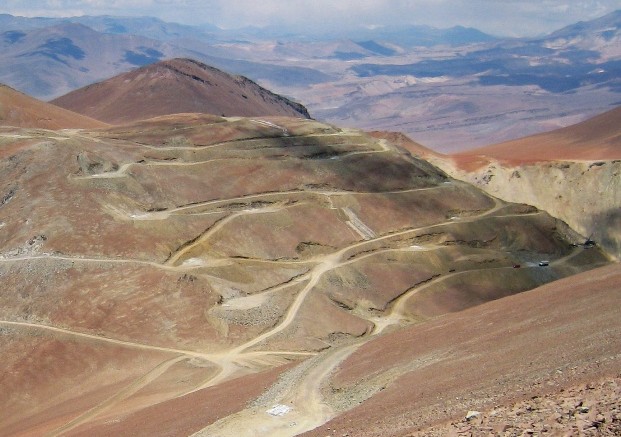Over the last three years, Atacama Pacific Gold (TSXV: ATM; US-OTC: ACPGF) has advanced its Cerro Maricunga gold deposit in northern Chile from a grassroots discovery to one of the largest undeveloped oxide gold deposits in the world, with 3.5 million oz. gold.
An updated resource estimate based on 25,500 metres of infill drilling last year and confined within a Whittle pit shell has increased measured and indicated resources by 1.01 million oz., primarily by converting inferred resources into the measured and indicated category.
“Our goal was to convert 75% of the inferred resource into the measured and indicated category, and we beat that number significantly,” says Atacama’s president and CEO Carl Hansen in an interview, adding that the new resource demonstrates the “remarkable consistency” of the project’s oxide gold mineralization.
“The resource update more than met our expectations and we were really successful, even though we used a lower gold price of US$1,200 per oz.,” he says. The previous resource estimate was based on US$1,400 per oz. gold.
Cerro Maricunga’s measured and indicated resources now stand at 248.8 million tonnes grading 0.43 gram gold per tonne for 3.47 million oz. gold, with inferred resources adding another 3.1 million tonnes grading 0.43 gram gold for 43,000 oz. gold.
“It’s one of the largest — if not the largest — oxide gold resources in the world right now, and that’s important,” Hansen says, a geologist whose career includes co-founding Andina Minerals, which was sold to Hochschild Mining (LSE: HOC; US-OTC: HCHDF) in 2012 for $103 million.
“In the market you always have to have something that has some scale to it,” he says. “This project has got size, and it’s got potential as well.”
In December Atacama finished raising $4 million, which Hansen says will be enough to get the company past the prefeasibility stage.
Cerro Maricunga has a lot of things going for it beyond its size and the fact that it’s an oxide project, which means it’s going to be inexpensive to build on a relative basis and simpler to operate, he says. One big attribute: Chile.
“We like working in Chile. It’s a country that is consistently ranked as one of the top in the world for mine development and it’s a place where, if you find something, you can assume there’s a reasonable chance of getting it permitted and built,” he says. “That’s the key.”
As for the challenges facing the industry, Hansen notes that “management has been around for a long time, and this isn’t the first downturn.”
He says he’s “cautiously optimistic about the market conditions, and we are progressing with the assumption that conditions will not get any worse than they are right now, and hopefully get better towards the end of the year.
“You spend your money appropriately and hopefully have a project that will be successful at the current gold price, which we believe we have with Cerro Maricunga.”
With the updated resource in hand and some of the metallurgical work already done, Hansen says the company is ready to pass all of the data over to the engineering team, which will incorporate it into a prefeasibility study that is expected to be finished by June.
The Cerro Maricunga resource is largely located within three gold zones: the Lynx, Phoenix and Crux zones, which outcrop. The oxide-associated gold mineralization has been drilled to depths of more than 600 metres and remains open to depth.
The deposit is hosted in intrusive sub-volcanic rocks and genetically related breccia emplaced along a main northwest striking structure. The mineralization consists mainly of free gold associated with black–grey-banded quartz veinlets, and sulphides are scarce.
The resource estimate is contained within a resource-limiting open-pit shell along a 2.5 km trend, 800 metres wide and up to 460 metres deep.


Be the first to comment on "Atacama Pacific Gold grows Cerro Maricunga"